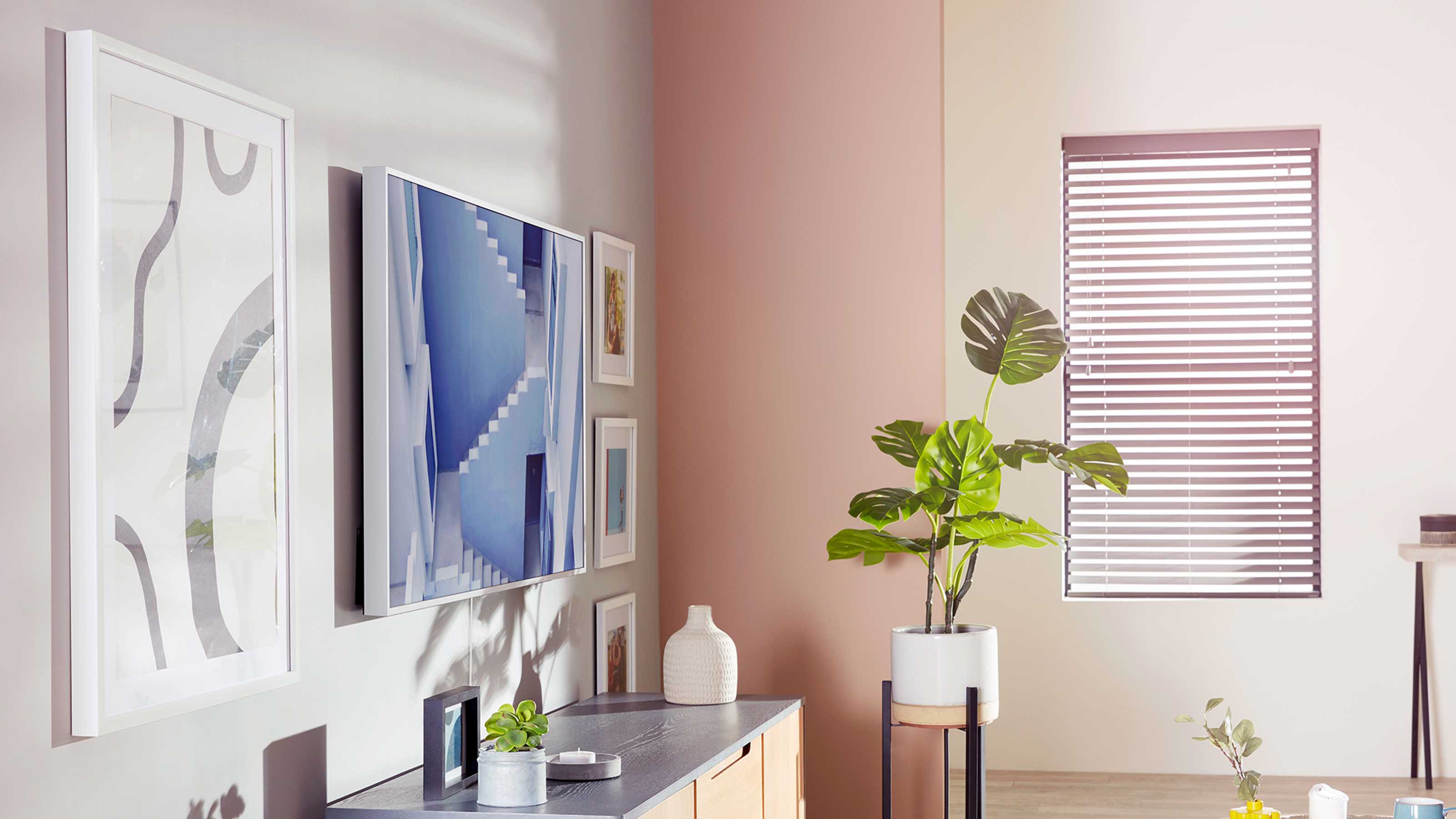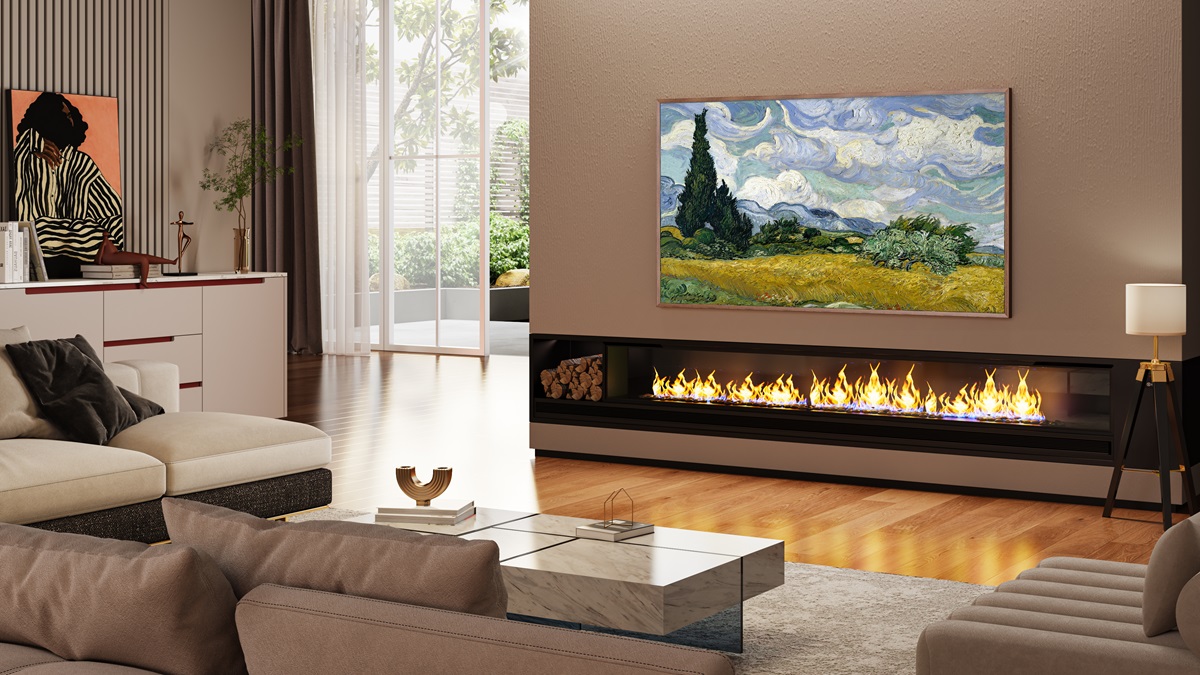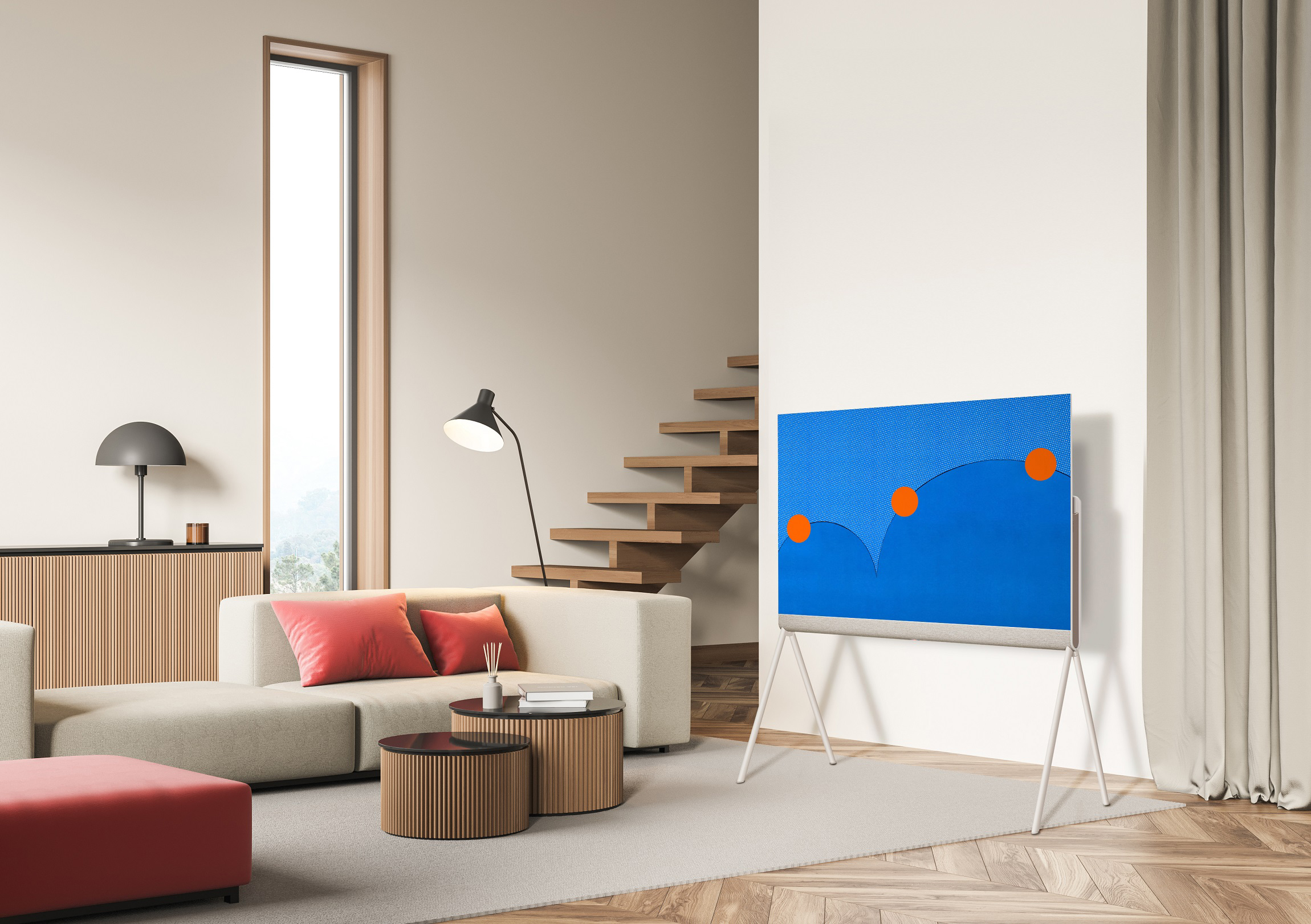
The days when TVs were small boxes in the living room have long gone, and in almost every way that’s a change for the better. Picture quality is incredible, and panels are so big that trips to the movie theater are no longer necessary for properly taking in the latest blockbuster.
But in one way, they’re worse. The bigger the TV, the more of an eyesore they are to your perfectly calibrated living space.
While Samsung’s The Frame isn’t a perfect solution, it’s certainly an improvement. It’s a TV set that tries to mimic the aesthetics of gallery art when not in use, with minimal wires, an artwork-style frame instead of a plastic bezel, a non-reflective matte display and works of fine art that appear when the screen isn’t in use. While it’s unlikely to fool anyone into thinking you don’t have a TV, it certainly minimizes the impact.
Since 2017, The Frame has largely been in a class of its own, but now other TV makers are getting in on the act. So if you're planning on getting a new TV when the Samsung Frame is next on sale, it may be worth checking out the competition first. Here are contenders from HiSense, TCL and LG, and how they stack up against The Frame.
1. HiSense CanvasTV

Pros:
- Improved specs on paper
- Cheaper than The Frame
Cons:
- No One Connect Box equivalent
- No Art Store
- Fewer size options
Announced back in May, HiSense’s CanvasTV was the first real direct competitor to The Frame, featuring the same anti-glare display technology that mimics the texture of real paintings when not being used for the latest blockbuster.
Like The Frame, it’s 4K QLED technology with support for modern stables like ALLM and VRR with multi-channel surround sound support. Also like The Frame, you can switch out different magnetic edges to customize the look in your living room (though these are also sold separately).
CanvasTV has a handful of advantages over The Frame, however. Firstly, it supports Dolby Vision as well as HDR10+, while Samsung only integrates the latter. Secondly, it has a 144Hz refresh rate rather than 120Hz, meaning it can refresh the image more times per second. Frankly, this is a theoretical improvement for anyone but gamers, and even they aren’t likely to notice unless they hook a PC up to it (even the priciest consoles don’t offer many 120Hz experiences).
The third is quite a big one, however: price. The cheapest CanvasTV — a 55-inch model — sneaks in at the three-figure price point of $999 at BestBuy, while the equivalent Frame comes in at $500 more at the same retailer. That’s more expensive than the 65-inch version of CanvasTV which comes in at $1,299 (Samsung’s version is $1,999).
There’s a flip side to this, however: those are the only two sizes of CanvasTV available. The Frame, on the other hand, comes in five different dimensions ranging from 43 to 85 inches.
The Frame has two more advantages. The first is the One Connect Box which can tidy all your cables into one, neat out-of-sight box to make it appear more like a painting and less like a tech hub. CanvasTV doesn’t have a similar offering.
Secondly, while Samsung’s Art Store offers over 2,500 pictures to purchase along with a monthly curation of works that can be displayed free of charge, CanvasTV’s alternative sounds a bit more basic, with the company merely offering “a curated world of free artistic masterpieces with a collection of pre-loaded works spanning abstract, modern, and renaissance styles.”
2. TCL NXTFrame

Pros:
- Improved specs on paper
- Comes with a wooden frame in the box
Cons:
- Less customizable
- No One Connect Box equivalent
Earlier this month, the Chinese company TCL came up with its own alternative to The Frame. We’ve outlined the similarities and differences in our The Frame vs TCL NXTFrame article, but here’s a recap.
It shares two of the advantages with CanvasTV: it supports both Dolby Vision and HDR10+, and can reach up to 144Hz. But while both CanvasTV and The Frame use edge lighting to illuminate the screen, NXTFrame has direct-lit LEDs immediately behind the screen, which should lead to a more even picture. Unlike the other two models, it also comes with a magnetic wooden frame in the box, rather than making you buy one separately.
But this comes at a cost, and the TCL NXTFrame is more expensive than CanvasTV, with similar pricing to The Frame. Prices start for the NXTFrame at $1,499 for a 55-inch model from BestBuy, and go all the way up to $3,499 for the 85-inch version at the retailer.
A ‘Pro’ model will also be coming in September. This comes with a 3.1.2 soundbar and wireless subwoofer co-built with Bang & Olufsen. Prices there range from $1,999 to $4,999.
Like CanvasTV, it also misses out on One Connect Box equivalent for simplifying cable management, and while the inclusion of a magentic wooden frame is nice, there’s only one finish available, while both HiSense and Samsung offer different styles to match your internal decor.
3. LG OLED evo G3 Gallery Edition or LG Pose

Pros:
- OLED panel for superb picture quality
Cons:
- Not as good at the art side of things
Unlike CanvasTV and NXTFrame, LG’s arty offerings aren’t really direct competitors to The Frame.
Yes, they are designed to look like art at a glance, with their gallery-style bezels and thin design, but the underlying technology is different and makes them less well-suited to showcasing art, even if they’re better TVs overall.
These are OLED screens, rather than matte QLED, so in motion, things look a lot more like a regular TV. That has pros and cons — there’s a reason that OLED screens are regarded as the gold standard in picture quality thanks to the infinite contrast, but as fake art, these positives become negatives.
For starters, the panels aren’t matte like the options above making things more reflective. And because these are OLED screens, they’re not built to display static images for long periods of time, given the risk of OLED burn-in. The upshot of this is that art is cycled through rather quickly, and it looks a lot like looking at pictures on a regular TV screen.
That may not be a problem for you, of course, and there’s no doubt these TVs are more aesthetically appealing than your standard flat screen from Best Buy — especially The Pose, with its fabric base and stylish four-legged stand. But the screen type makes it a dead giveaway that this is indeed a television and not a work of art.
They’re also rather pricey. The LG OLED evo G3 gallery edition starts at $2,499.99 for the 55-inch model direct from LG, going up to $6,499.99 for an 83-inch version. The Pose is more competitive, with a 48-inch model costing $1,499.99 or the 55-inch version coming in at $1,699.99.
Final thoughts
LG OLED TVs aside, there isn’t a great deal of difference in the specs of The Frame’s challengers. Most of the specs are identical or very similar, even if certain aspects may appeal to you. For example, the cottage industry of third-party frame makers for Samsung’s TV certainly makes it a solid option for those who value aesthetics over all else.
Ultimately, however, the best thing to do is visit a retailer, examine the options for yourself, and see which looks the best for your space. As ever with TV shopping, make sure you opt for somewhere with a good return policy, just in case the panel you pick doesn’t look quite as appealing when plugged in in your living room!







